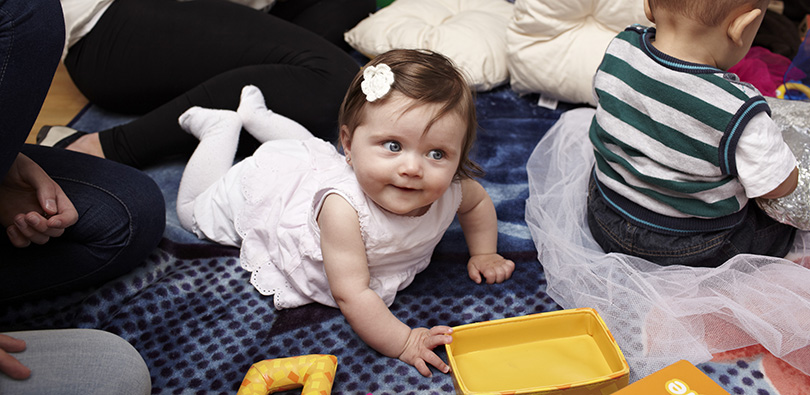
The UK physical activity guidelines include recommendations for the amount of physical activity that under-fives should be doing. This reflects a growing awareness of the importance of physical activity for this age group and follows the lead of other major countries.
The guidelines are relevant to all children under the age of five irrespective of gender, race or socioeconomic status, but should be interpreted with consideration for individual physical and mental capabilities.
Physical activity guidelines for the under fives
Infants (less than 1 year):
- Infants should be physically active several times every day in a variety of ways, including interactive floor-based activity, e.g. crawling.
- For infants not yet mobile, this includes at least 30 minutes of tummy time spread throughout the day while awake (and other movements such as reaching and grasping, pushing and pulling themselves independently, or rolling over); more is better.
NB: Tummy time may be unfamiliar to babies at first, but can be increased gradually, starting from a minute or two at a time, as the baby becomes used to it. Babies should not sleep on their tummies.
Toddlers (1-2 years):
- Toddlers should spend at least 180 minutes (3 hours) per day in a variety of physical activities at any intensity, including active and outdoor play, spread throughout the day; more is better.
Pre-schoolers (3-4 years):
- Pre-schoolers should spend at least 180 minutes (3 hours) per day in a variety of physical activities spread throughout the day, including active and outdoor play. More is better; the 180 minutes should include at least 60 minutes of moderate-to-vigorous intensity physical activity.
Support and dissemination
We have produced a number of resources which are designed to provide early years practitioners and health professionals with practical tips on using the physical activity guidelines effectively.
Please note: The UK physical activity guidelines for early years were updated in September 2019. These documents reflect the previous guidelines. While the guidelines have changed the advice and ideas contained in these booklets remains applicable.
Guideline information booklets
Two information booklets are available one with advice for physical activity with infants who cannot yet walk and one for walkers. They provide information on the importance of physical activity for children in the early years and appropriate types of activity as well as tips for reducing sedentary behaviour.
Information leaflets for parents
These leaflets provide tips on how parents can incorporate physical activity into daily activities as well as the types of activity their child needs. There is a leaflet with ideas for activities with babies who cannot yet walk and one for young children who can.
Evidence briefing for practitioners
For practitioners who require a more detailed review of the evidence base available for physical activity and the early years, we have produced the early years evidence briefing. This includes detailed information on physical and psychological health outcomes of physical activity, current levels, measurement and implications for practice.
Practical ideas for promoting physical activity
This practice briefing is designed to give practitioners and managers of early years settings practical ideas for promoting physical activity with the under fives. The recommendations in the briefing are based on research evidence and recognise that early years practitioners, as well as parents and carers, can strongly influence the physical activity opportunities available to young children.